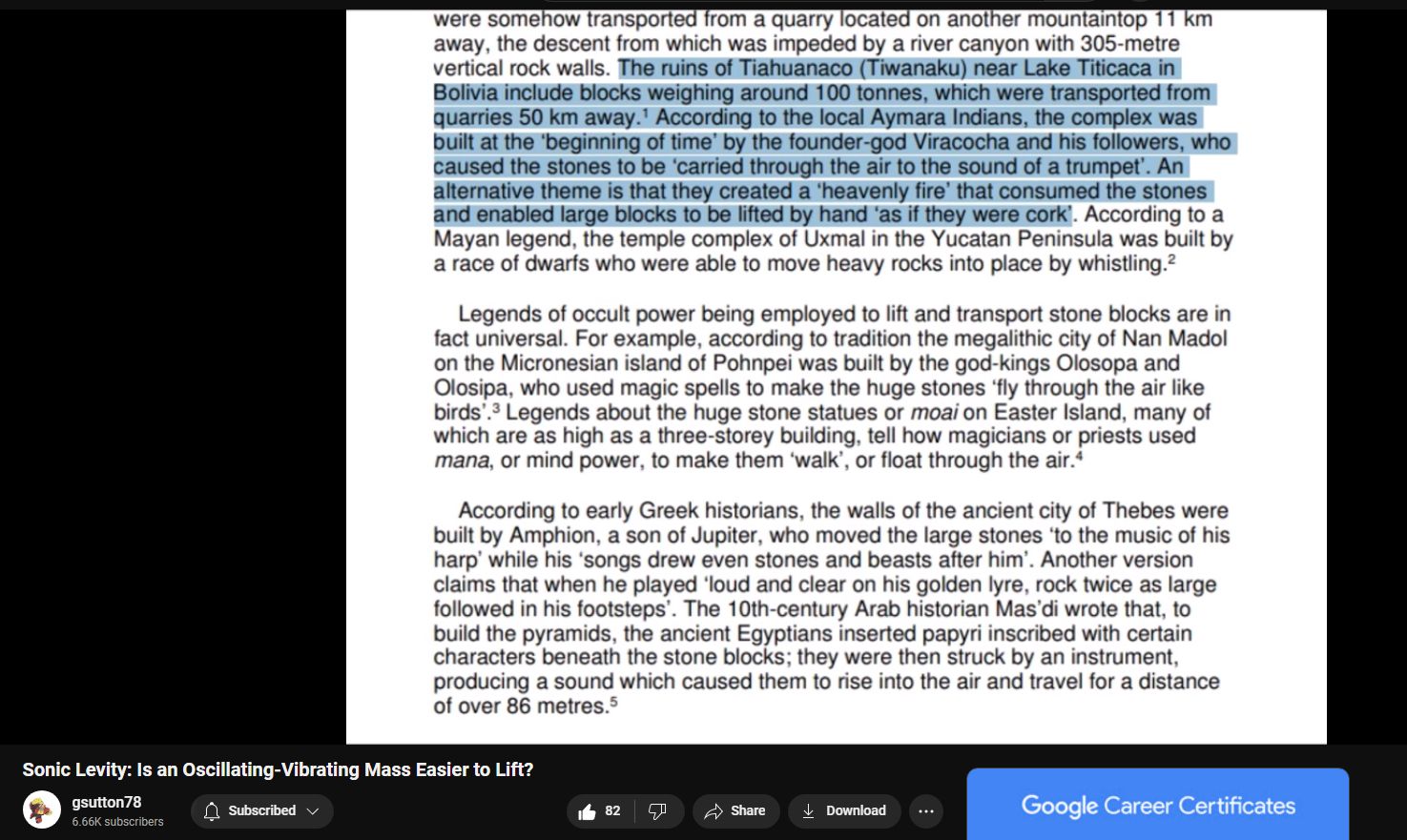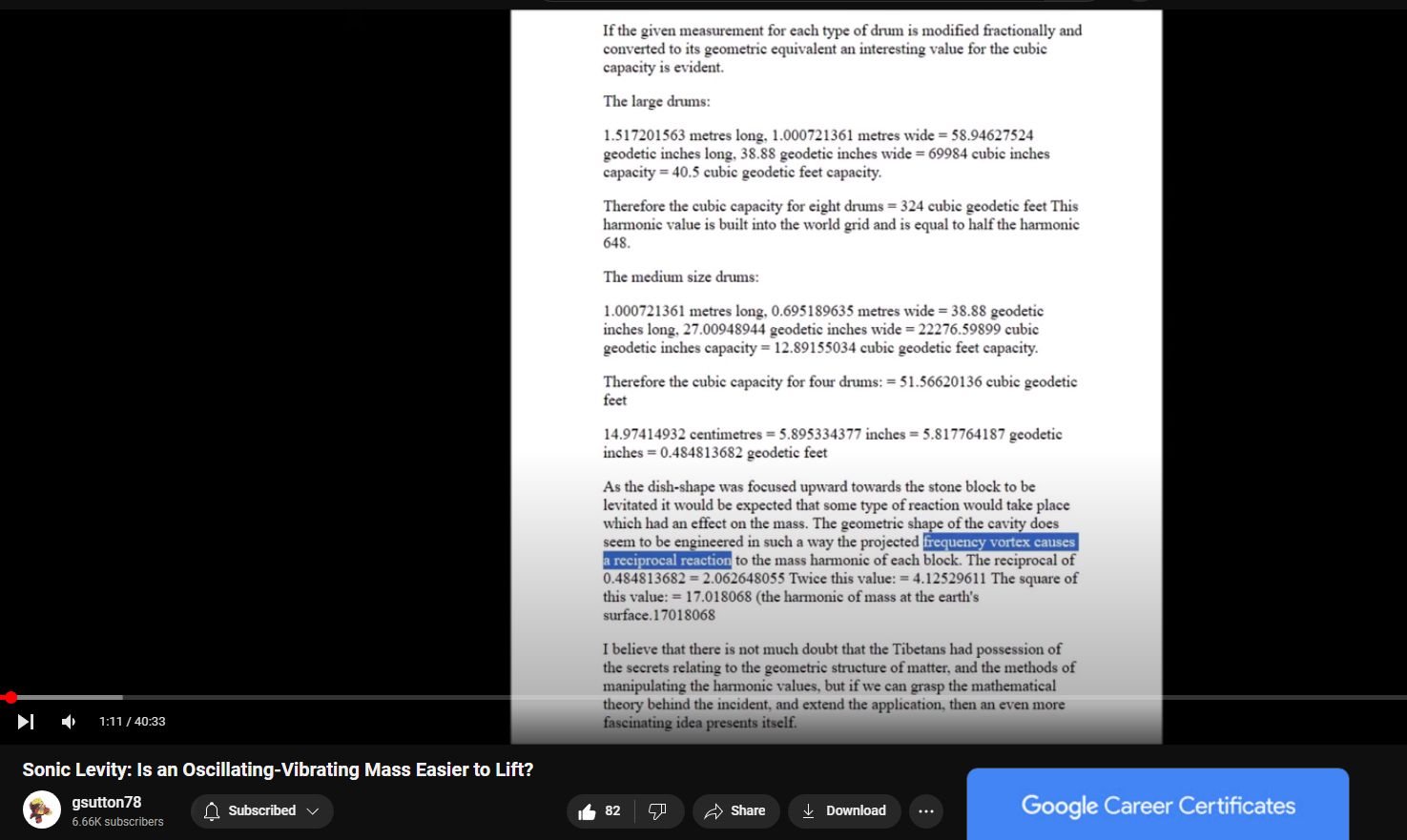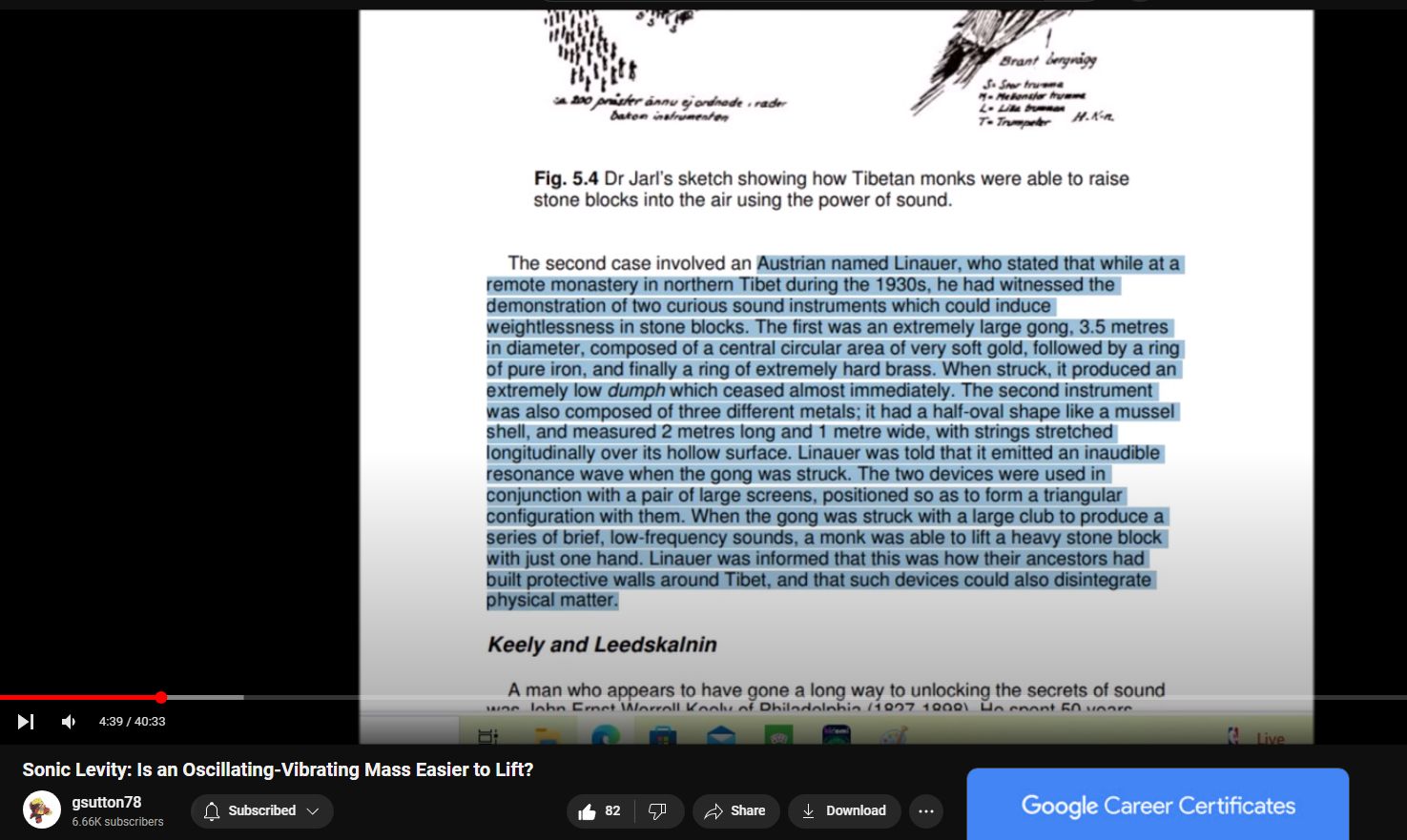From https://4sci.org and SOURCE gsutton78 youtuber https://www.youtube.com/watch?v=TJZc2xAZ8no
Sonic Levity – Acoustic levitation technique in the ancient world
So, we’ve talked about an alleged acoustic levitation technique in the ancient world; interpreted from various legends from antiquity. Macro-levitation is usually associated with electromagnetism, buoyancy, or aerodynamics rather than sound, allowing small to heavy objects to be raised from the ground. But, unlike the former methods, there seem to be different types of acoustic levitation. One type is the one which we are most familiar with in modern containerless processing. This method allows an object to float in the nodal region created by the interference pattern of two or more waves. Another type is the recent acoustic tractor beam device which uses an acoustic vortex. This vortex created by 52 miniature speakers enables the floatation of objects that are normally too big to lift and hold using the interference pattern method. The acoustic vortex has also been postulated on a megalithic scale in the well-known Tibetan Levitation account. Still, another method involves vibratory lift such as the type coined by inventor John W. Keely in which the particles of a mass are allegedly vibrated at high enough frequencies that they can seemingly repel or become dislodged as it were from gravity, enabling objects of practically any weight to float in the air. But some of the other legends point not to full levitation, but instead to the use of sonic energy to induce a temporary loss of weight significant enough to allow a mass to be lifted with considerably less effort. This principle could be termed sonic levity. One example is a legend surrounding the creation of Tiahuanaco. It says here that,

“The ruins of Tiahuanaco (Tiwanaku) near Lake Titicaca in Bolivia include blocks weighing around 100 tons, which were transported from quarries 50 km away. According to the local Aymara Indians, the complex was built at the ‘beginning of time’ by the founder-god Viracocha and his followers, who caused the stones to be ‘carried through the air to the sound of a trumpet’. An alternative theme is that they created a ‘heavenly fire’ that consumed the stones and enabled large blocks to be lifted by hand ‘as if they were cork’”.
The former variation describes levitation while the latter describes a principle of levity. Philadelphian inventor John W. Keely is also said to have experimented with levity. The following account says that,
“One of Keely’s little scientific experiments is to put a small wire round an iron cylinder that weighs several hundred weight [ I believe this means several hundred pounds], and when the “force” runs through the wire, to lift the cylinder up on one finger and carry it as easily as if it were a piece of cork. Not long ago he moved, single-handed, a 500 horse-power vibratory engine from one part of his shop to another. There was not a scratch on the floor, and astounded engineers declared that they could not have moved it without a derrick, which to bring into operation would have required the removal of the roof of the shop”.
“Another case involves an Austrian named Linauer, who stated that while at a remote monastery in northern Tibet during the 1930s, he had witnessed the demonstration of two curious sound instruments which could induce weightlessness in stone blocks. The first was an extremely large gong, 3.5 meters in diameter, composed of a central circular area of very soft gold, followed by a ring of pure iron, and finally a ring of extremely hard brass. When struck, it produced an extremely low dumph which ceased almost immediately. The second instrument was also composed of three different metals; it had a half-oval shape like a mussel shell, and measured 2 meters long and 1 meter wide, with strings stretched longitudinally over its hollow surface. Linauer was told that it emitted an inaudible resonance wave when the gong was struck. The two devices were used in conjunction with a pair of large screens, positioned so as to form a triangular configuration with them. When the gong was struck with a large club to produce a series of brief, low-frequency sounds, a monk was able to lift a heavy stone block with just one hand. Linauer was informed that this was how their ancestors had built protective walls around Tibet, and that such devices could also disintegrate physical matter.”
But as fascinating as these accounts are, they are still anecdotal and can’t really be verified. What do modern efforts have to say about these proposed principles of vibrations? Have more contemporary observations yielded results that are similar to these claims or would at least imply that these accounts some validity?







Cymbals, horns, trumpets, humming/voices — Tibetan Stone Hurling

